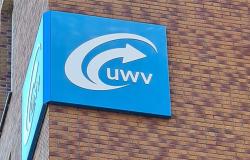Het Parool previously wrote this about this subject
New interactive websites from the municipality of Amsterdam should discourage tourists from choosing the capital as a ‘party destination’. Are they sensitive to that? “I’m here to smoke weed.”
Read the report
Sometimes I cannot understand the level of amateurism of the municipality of Amsterdam, and in particular of councilor Mbarki.
It seems as if all his arrows are aimed at partying tourists and he has no eye for the core problem, namely the volume, the number of tourists. Last year, Mbarki launched the Stay Away campaign, aimed at young, nuisance tourists from Great Britain. It was very short-lived. In a letter, Mayor Halsema and Councilor Mbarki informed the city council that the campaign has not led to an immediate decrease in the attractiveness of the city ‘for the party tourist’ from the United Kingdom. This was six months after the launch of the campaign. Anyone who knows anything about branding, image campaigns and (over)tourism knows that something like this is a matter of patience, of repetition, again and again. And when it comes to a negative image, over demarketing, it is even more complex. But not for Mbarki: now he’s launching his next one shot in the darkAmsterdam Rules.
Conceived by the sender
The production of the Stay Away campaign was very amateurish and Amsterdam Rules is also very naive. The English newspaper The Guardian hits the nail on the head with his description of the new campaign as ‘typical Dutch bluntness’. It is clearly conceived from the sender and not the receiver, one of the basic mistakes in marketing.
English friends of mine who have searched the internet for ‘coffee shop’, ‘red light district’ and ‘stag party’ have not come across Amsterdam Rules. The campaign also has a possibly undesirable effect for Mbarki, namely a fairly long article The Guardian about it with attention to drugs, sex and alcohol in Amsterdam. The ‘desired tourist’ may be put off by this.
And what about Mbarki’s track record? In addition to the Stay Away campaign, last year the tendon rooms had to close at 3 a.m. to relieve the area, but that has – surprisingly! – led to loss of income for sex workers; Now they can stay open until 6 a.m. again. A smoking ban was also introduced last year for De Wallen and the immediate surrounding area.
Mopping with the tap open
I spent five weekends in De Wallen in the summer to observe and speak to enforcers. It was busy, extremely busy even, but the atmosphere was mostly friendly. I saw tourists smoking cannabis everywhere and no enforcers intervened. And as far as I know, no fine has been issued so far.
Nowhere do I read what effect these measures have, but I’m afraid the answer is ‘none’. Who is fooling whom? When will Councilor Mbarki look in the mirror?
Amsterdam has long been struggling with nuisance tourists. Think of the hippies on Dam Square and in the Vondelpark in the 1970s. But that is not the core of the problem. Since the 1970s, the number of tourists has grown enormously and the part of the city that is interesting to them is limited. If the councilor does not know how to tackle the volume, it is a waste of money and the campaigns are a waste of money.
Lelystad Airport
But how can the councilor tackle that volume?
First, he should target the main arrival points for foreign tourists. Schiphol must shrink, creating a win-win situation for overtourism in Amsterdam, for the quality of life of those living near Schiphol and for the climate.
Secondly, Lelystad Airport should never open for commercial flights. Never. And the planned new Passenger Terminal must be scrapped and the number of arrivals of (river) cruise ships must be drastically reduced. After all, these passengers are the least interesting for the city; they spend the least and move largely in groups.
These steps require courage, cooperation at national and regional level and patience.
In addition, the councilor and mayor must enter into incisive discussions with the regional municipalities. This problem can only be solved together with the metropolitan region. It is not an easy path, but it is the only one. The choice is up to the alderman, the mayor and the municipal council.
Stephen Hodes, retired tourism expert






